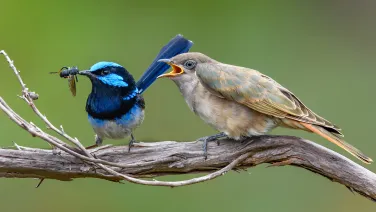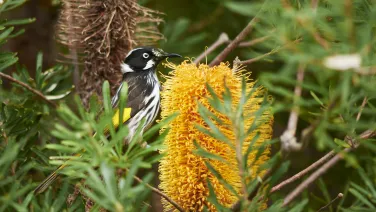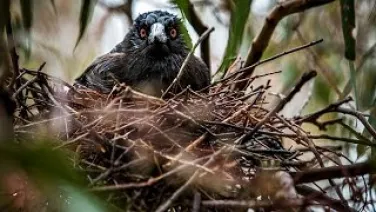How to survive magpie swooping season
How to survive magpie swooping season

The Australian Magpie is one of the country's most iconic birds, beloved for its melodic warbling and impressive intelligence. But come breeding season, some of these majestic avians transform into feathered fiends known colloquially on the internet as 'swoopy boiz.'
If swooping season strikes fear into your heart, you're not alone. Fortunately, Dr Chaminda Ratnayake from the Research School of Biology at The Australian National University (ANU) has the intel you need to navigate the great outdoors this spring.
Why magpies swoop
Video compilations of magpies terrorising cyclists and pedestrians abound on social media, but while it might seem like these birds are motivated by malice, their intentions are wholesome. Like Vin Diesel in the Fast and Furious franchise, the only thing magpies care about during swooping season is family.
"Swooping behaviour is a part of the nest defence activity of magpies," Ratnayake explains.
Not all magpies engage in swooping, but the primary perpetrators are male parents. They take on the role of protecting their nestlings from potential predators either once the nest has been built or when the female is ready to lay her eggs.
Their two main modes of defensive behaviour are swooping and attacking. Swooping is when a magpie dives down at someone from a tree before looping back to their original perch or another tree. Attacking involves the magpie chasing a perceived intruder continuously, often to the edge of its territory.
The good news is that swooping season doesn't last forever. Statistics compiled by the community website Magpie Alert suggest that most swooping takes place between August and October.
"When the fledglings are out of the nest, the nest defence activity decreases," Ratnayake says.
Whatcha gonna do when they come for you?
Being dive bombed by a magpie is almost a rite of passage in Australia, but it's also something many of us would prefer to avoid.
Ratnayake recommends adopting the Avoid, Minimise Damage and Inform strategy to get through swooping season.
AVOID: If you have an inkling of where the swooping magpie's nesting tree is located, steer clear of it for a couple of months. According to Magpie Alert, there were several swooping hot spots on the ANU campus in 2021, including Daley Road and the bike paths along Clunies Ross Street and Parkes Way junction.
MINIMISE DAMAGE: If you have to cross into a swooping magpie's territory, it's important to accessorise. Wearing a hat and sunglasses will help to protect your head and face. You can also carry an umbrella for this same purpose. Helmets adorned with cable ties are a popular choice for cyclists during swooping season, but Ratnayake cautions against any modifications that might compromise the protection helmets offer in the event of an accident.
Although the tell-tale rush of air as a magpie dives in the direction of your head can be intimidating, it's important to resist the urge to panic and flee.
"Running or cycling away is not a good idea," Ratnayake says. "Most recorded injuries occur when people try to avoid being attacked - especially when cycling."
If a magpie tries to swoop you, bend your elbow and bring your forearm close to your head to protect your face. Once your eyes are covered, look down and walk away calmly. Cyclists should also dismount their bikes and proceed on foot through a magpie's attack zone.
INFORM: Make a note of where you were swooped and warn others by recording your attack on Magpie Alert. If you are injured and believe the magpie is a serious threat, you can file a report with the ACT Government. Magpies are a protected species, so please don't harm them or try to carry out any bird removal on your own.
If you've been swooped multiple times by the same magpie on different days and found yourself wondering if you're being personally victimised, the answer is probably yes.
"Magpies can recognise individual faces," confirms Ratnayake. "Once they identify a single person as a threat, there may be a tendency to swoop or attack them during the breeding season close to the nesting area."
In this situation, it's probably best to concede defeat and find another route, at least for a few months.
Swooping season can be a nuisance, but remember, the magpies are only trying to protect their babies. Respect their space, protect your face and stay safe.
Story by Amanda Diaz



